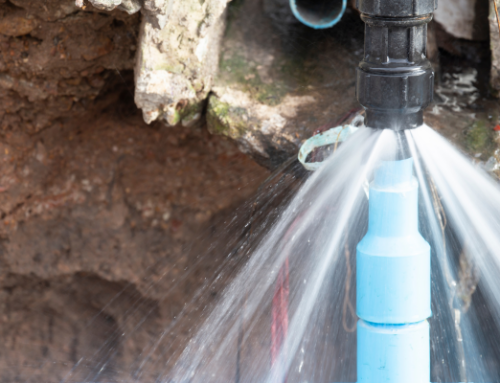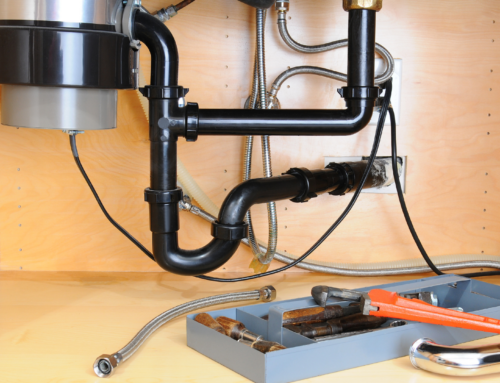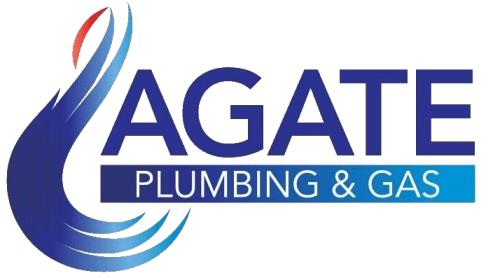Emergencies don’t wait for a convenient time to strike, and plumbing issues are no exception. Whether it’s a burst pipe, a clogged drain, or a malfunctioning water heater, plumbing emergencies can cause significant damage to your home if not addressed promptly. Knowing how to handle emergency plumbing situations before Agate Plumbing & Gas arrives to help can make a significant difference in minimising damage.
Plumbing: Responding to Emergencies
As the saying goes, “prevention is better than cure”. In the context of plumbing emergencies, preparation and a basic understanding of how to manage critical situations can be very handy.
By familiarising yourself with these proactive measures, you not only buy valuable time but also contribute significantly to reducing the severity of the issue. Let’s explore some common emergency plumbing scenarios and what to do to minimise damage and ensure your safety.
Recognising the Signs
One of the first steps in dealing with a plumbing emergency is realising you have one. Here are some common signs that you may have a problem:
- Water Leaks: Any visible water leaks should be treated as a potential emergency. This includes leaks from pipes, fixtures, water heaters, or appliances. Even small leaks can lead to significant problems over time.
- Sudden Drop in Water Pressure: A sudden and significant decrease in water pressure throughout your home may indicate a problem in the water supply system, such as a burst pipe or a severe leak.
- Burst Pipes: The sound of rushing water or discovering a burst pipe requires a swift response to prevent substantial damage.
- Backed-Up Sewer: If you notice sewage backing up into your drains or toilets, it’s a sign of a serious issue in the sewer line. This blockage poses health risks and needs professional attention.
- Flooding: Any form of flooding in your home, whether from a burst pipe, a malfunctioning appliance, or heavy rainfall, is an emergency. It can cause extensive damage to your property.
- No Hot Water: If you suddenly lose hot water and cannot determine a simple cause, like a tripped breaker or pilot light, it may indicate a problem with your water heater.
- Foul Odours: Unpleasant smells, especially those resembling sewage or mould, may indicate a hidden leak or other plumbing issue. These odours can indicate water damage or a potential health hazard.
- Frozen Pipes: In cold weather, frozen pipes can lead to bursts. Quick action is essential if you notice frost on your pipes or experience a sudden loss of water flow during freezing temperatures.
- Malfunctioning Sump Pump: If you have a sump pump, its failure during heavy rainfall can lead to basement flooding. Regularly test and maintain your sump pump to avoid emergencies.
- Gas Odour: If you smell gas in your home, it’s a potentially dangerous situation. Evacuate the premises immediately, do not use electrical switches, and call your gas provider and emergency services.
How to React
While the instinctive reaction might be panic, having a well-thought-out plan when confronted with a plumbing issue can make all the difference. After you’ve called a professional like Agate Plumbing & Gas, here are a few things you can do while you wait for help to arrive.
Shut Off the Water Supply
The first and most important step in any plumbing emergency is to shut off the water supply to the affected area. Unchecked water can quickly inundate your living space, causing structural damage and compromising electrical systems.
- Locating the Main Water Shut-Off Valve: You need to find your home’s main water shut-off valve to shut off your water supply. The valve is typically found near where the water main enters your property. Common locations include basements, crawl spaces, utility rooms, or outdoor meter pits.
- Turning Off the Water Supply: Once you’ve located the main water shut-off valve, turning it clockwise (to the right) usually shuts off the water supply. However, in some instances, the valve may be a lever that requires a perpendicular orientation to the pipe to be closed.
- Preparation for Emergency: Emergencies are, by nature, unpredictable. Therefore, preparing for them in advance is a practical strategy. Make sure everyone knows its location and how to operate it. Consider attaching a label or tag for quick identification during stressful situations.
You can gain crucial time to assess the situation and organise professional help by halting the water flow promptly.
Turn Off Appliances
Appliances directly connected to your home’s electrical system pose a potential risk during plumbing emergencies. Water and electricity are a hazardous combination that can lead to electrical shocks, fires, or further damage to appliances.
- Ensuring Electrical Safety: Electrical safety is paramount during plumbing emergencies. Avoid contact with water near electrical appliances, and only attempt to turn off the power supply if it can be done safely.
- Turning Off the Power: A dedicated circuit breaker or an individual disconnect switch typically controls the power supply to appliances. Once you’ve identified the power source, flip the corresponding circuit breaker to the “off” position or use a disconnect switch. In some cases, appliances may have a dedicated plug, and unplugging them can serve as an alternative.
Turning off the power supply not only prevents electrical hazards but also contributes to minimising further damage.
Relieve Pressure
When faced with a plumbing emergency characterised by excessive pressure, such as a blocked toilet or a clogged sink, relieving the pressure can be crucial.
- Opening the Pressure Relief Valve on a Water Heater: Water heaters often come equipped with a pressure relief valve as a safety feature. This valve is typically a lever or a small knob located near the top of the unit. Gently lifting or turning the valve can release excess pressure. However, exercise caution and ensure a proper drainage system is in place to handle the water that may be expelled.
- Unclogging with Caution: Clogged sinks and blocked toilets are other common scenarios where pressure can build up. Using a plunger to clear these is a practical solution, but approach this task carefully. Place the plunger over the drain, ensuring a tight seal, and apply gentle, controlled pressure. Avoid excessive force, which may worsen the clog or damage the pipes.
As part of your response, take note of the factors that contributed to the pressure buildup. Whether it’s recurring clogs or issues with the water heater, addressing the root cause can prevent similar emergencies in the future.
Containing Minor Leaks
When attempting to contain a minor leak, it’s crucial to identify its source. Understanding where the water comes from allows you to target your containment efforts effectively.
Create a Barrier with Towels or Rags: Place absorbent materials, such as towels or rags, around the source of the leak. Arrange them strategically to create a barrier that directs the water away from vulnerable areas, such as walls, flooring, or furniture.
Use Buckets or Containers: Position buckets or other watertight containers beneath the leak to collect dripping water. Ensure that the containers are stable and won’t tip over easily. Regularly check and empty the containers to prevent overflow.
Sealing Joints or Cracks: If the leak is emanating from a visible joint or crack, consider using waterproof sealant or plumber’s tape to seal the area temporarily. These measures can provide a short-term solution and help minimise the amount of escaping water.
Address Standing Water: If the leak has resulted in standing water, use a mop or a wet/dry vacuum to remove it promptly. Standing water can lead to more extensive damage, such as water stains, mould growth, and structural issues.
While these measures can help contain minor leaks temporarily, they are not a substitute for professional help.
Clearing the Way for Agate
A plumbing emergency can be stressful, but knowing how to act swiftly and effectively can help you regain control of the situation and prevent further complications.
- Communicate Clearly: When calling for professional plumbing help, clearly communicate the nature of the emergency and the steps you’ve taken to mitigate the situation. Accurate information will help us come prepared with the right tools and equipment to address the issue promptly.
- Answer Questions: We may ask additional questions to gather more information about the situation. Questions may include details about the age of your plumbing system, any recent maintenance or repairs, and whether you’ve noticed any unusual sounds or odours.
- Provide Ease of Access: Once you’ve contacted Agate for emergency plumbing services, clear your driveway of any parked cars. That way, when we get to you, we can save precious time looking for parking. You can also help us by moving any belongings that may be in the way so they remain unharmed, allowing us to access plumbing issues more quickly.
We pride ourselves on a swift, efficient emergency response and are equipped to handle a wide range of plumbing and gas-related emergencies. By choosing Agate Plumbing & Gas, you can trust that repairs and installations are carried out to the highest standards, ensuring long-lasting solutions.
Assistance is just a phone call away whenever you need it. So, if a plumbing disaster strikes, call us immediately!






